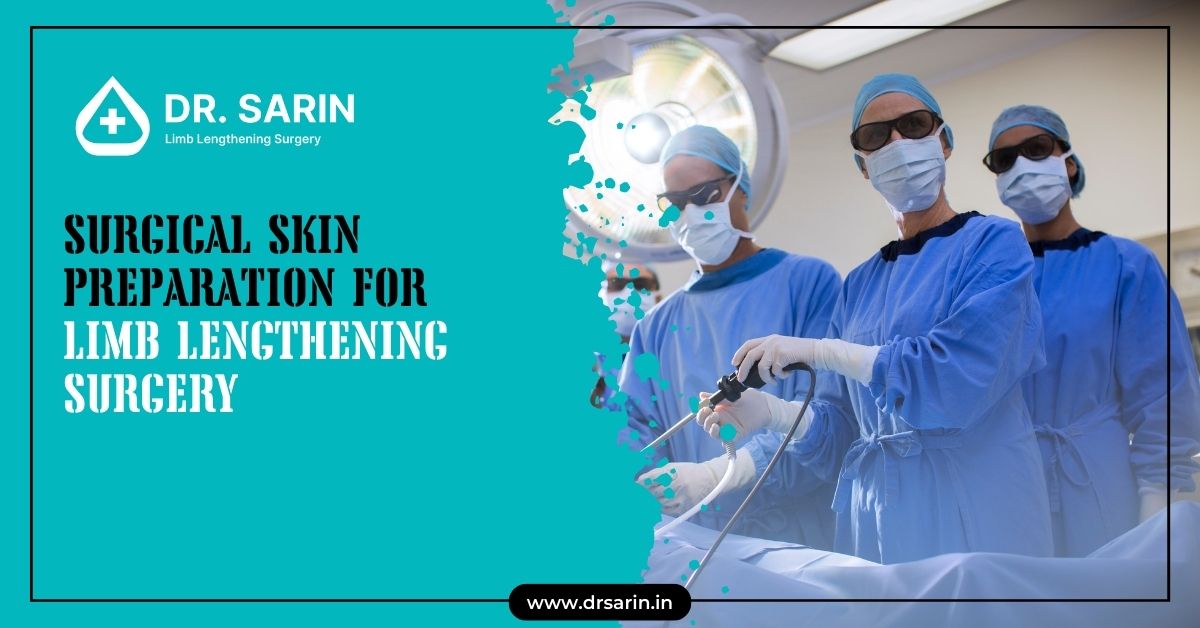Why Is Surgical Skin Preparation Important?
Surgical skin preparation removes dirt, oil, and microorganisms from the skin’s surface. This process reduces the risk of postoperative infections, which can complicate recovery and affect the overall success of the surgery. Limb lengthening procedures often involve external fixators or internal devices and require meticulous skin preparation to prevent complications.
Steps in Surgical Skin Preparation
- Preoperative Consultation and Instructions:
- Patients receive detailed instructions on preoperative skin care, including guidelines on bathing and any medications to avoid.
- Antiseptic soaps or solutions before the day of surgery may be recommended.
- Preoperative Bathing:
- Patients are advised to take a thorough shower or bath using an antiseptic soap the night before and the morning of surgery.
- Focus on cleaning the area around the surgical site to remove as many contaminants as possible.
- Hair Removal:
- Hair removal is performed using clippers, not razors, to prevent skin abrasions that could harbour bacteria.
- This step is typically done immediately before the surgical skin preparation in the operating room.
- Cleaning the Surgical Site:
- The surgical site is cleaned with sterile saline, soap, and water to remove visible dirt and debris.
- This initial cleaning helps prepare the skin for the application of antiseptic agents.
- Application of Antiseptic Agents:
- A broad-spectrum antiseptic solution, such as chlorhexidine gluconate or povidone-iodine, is applied to the surgical site.
- The solution is applied circularly, starting from the incision site and moving outward to cover a wide area.
- Allow the antiseptic solution to dry completely to maximize its effectiveness.
- Sterile Draping:
- Once the antiseptic solution has dried, sterile drapes are placed around the surgical site to create a sterile field.
- The drapes are positioned to expose only the area of the skin where the incision will be made.
Special Considerations for Surgery
- Extended Preparation Area:
- Limb lengthening procedures often require an extended area of skin preparation due to the involvement of fixators or implants.
- Ensure that all areas where surgical instruments, fixators, or implants come into contact with the skin are thoroughly prepared.
- Multiple Stages:
- It may involve multiple stages or adjustments, necessitating repeated skin preparations.
- Maintaining consistent and thorough skin preparation protocols for each stage is essential to prevent infections.
- Patient Education:
- Educate patients on the importance of maintaining cleanliness and monitoring the surgical site for signs of infection during recovery.
- Provide clear instructions on how to care for the surgical site at home, including any prescribed antiseptic treatments.
Conclusion
Adequate surgical skin preparation is a critical component of limb lengthening surgery, directly impacting the success of the procedure and the prevention of postoperative infections. By following a systematic approach to skin preparation, including thorough cleaning, antiseptic application, and sterile draping, surgical teams can create an optimal environment for safe and successful limb-lengthening surgery. Proper patient education and adherence to postoperative care instructions enhance overall outcomes and support a smooth recovery process.
Also Read:



